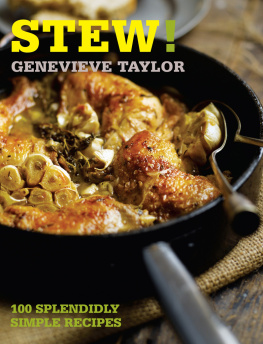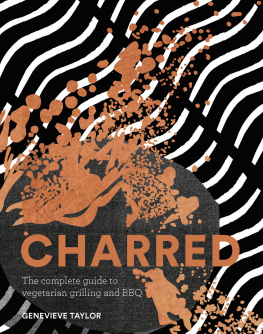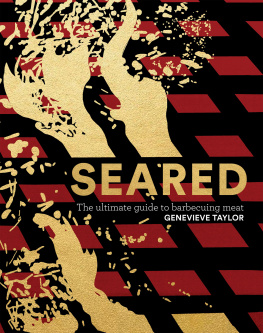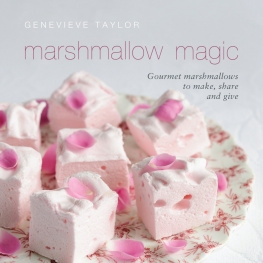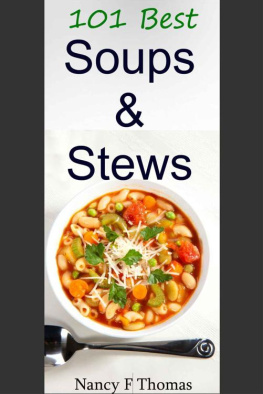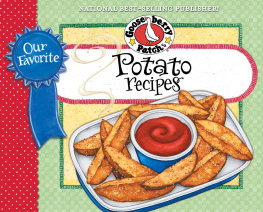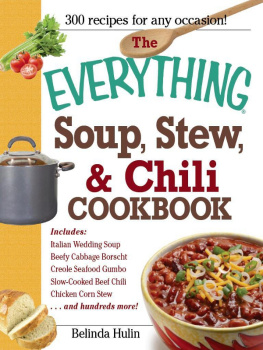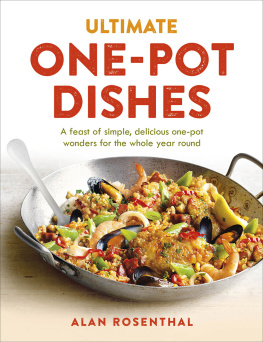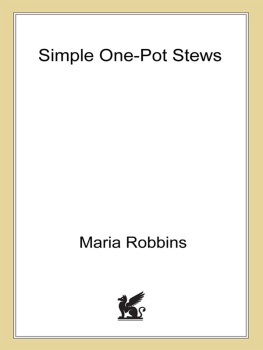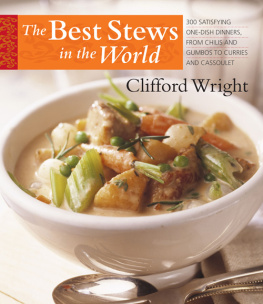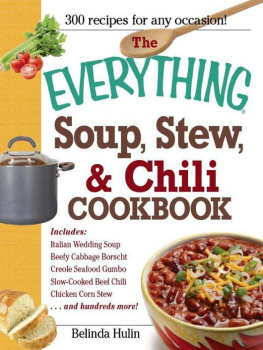
Stews, casseroles, braises, hotpots... these are all terms for essentially the same thing the age-old method of cooking meat and vegetables gently in some sort of liquid. Gently is the key word here. None of the recipes in this book are what you'd call fast food and none are cooked over a high temperature or in a hot oven.
Cooking at such languorous speed is what gives you the most amazing flavours and textures. What I love most about stewing is that you take just a handful of ingredients and time and patience seem to perform a magic trick in the pot when you are not looking. This is easy-peasy cooking at its most delicious. I admit, for some of the more exotic and fragrant stews the ingredient list is a little longer but the principles are the same. You simply assemble everything in the right order and let the low heat do the work whilst you get on with something else.
The other thing I love about stews is their truly universal appeal. When I told my friends and family I was writing this book their answer was invariably the same I absolutely love stews, do you need any help with tasting?!
I hope this book provides you with classic versions of old favourites but also that it opens your eyes to a wealth of new possibilities from all around the world.
Happy stewing!
Genevieve Taylor
Bristol, November 2010
In an ideal world we would all shop at our local butchers, fishmongers and greengrocers on a daily basis to source local, seasonal produce. But, as the mum of two young children, I know from personal experience that the supermarket often wins hands down on convenience. Therefore it was important to me that the majority of the ingredients in this book can be sourced in a one-stop-shop. However, I do have a great butcher and fishmonger that I use regularly, particularly to help to source the slightly more unusual ingredients. Quite often I will stock up on these harder to find things at the butchers or fishmongers and store them in the freezer until I want to use them. That way I can make something delicious with just a quick trip to the supermarket for a few last minute extras.
Choosing meat
The meat best suited for stewing comes from the more economical cuts, making this way of cooking eminently practical and sensible in cash-strapped times. But that doesnt make for cheap and bland eating. Meat for stewing tends to come from the harder working parts of the animal, like the muscles of the legs and neck, and with the proper treatment these parts yield a far superior taste than the pricier cuts.
There is one piece of advice I hope you will take seriously to heart as it does make a big difference. And that is to always try to buy your meat as a whole piece and cut it up yourself. Meat that is pre-diced potentially comes from all parts of the animal, and for that matter from all different animals. Each individual piece will therefore have different cooking requirements which will be impossible to meet within one pot. If you use a whole piece and prepare it yourself you know you are using the same cut of meat from the same beast and the cubes or slices will cook evenly to give the best results. With that in mind, below is a quick summary of the cuts to look out for when stewing:
Beef: shin, chuck steak, stewing steak, braising steak, skirt and oxtail
Pork: shoulder steaks, leg steaks and belly pork
Lamb: neck fillet, boned shoulder, shin and shank
Venison: shoulder, leg and flank
Chicken and feathered game: either a whole bird jointed, or legs or thighs
Choosing fish
Fish stews are another thing they tend to be more uneconomical than the meat or vegetable varieties, and some can end up being really pricy! I think of fish stews as being a special treat to serve occasionally rather than as a regular family meal. When buying fish, freshness is the key. The eyes and skin should be shiny and bright, and the aroma should be of salty sea rather than overpoweringly fishy.
Often with fish stews the best policy is to choose the fish that look best at the fishmongers on the day you visit rather than to go with a fixed idea of the type of fish you need. Although for some recipes the smoked fish chowder, for example you will be asked to buy a specific thing. With smoked fish I tend to go for the undyed variety as I find the dyed versions a little lurid but the choice is entirely yours.
Fish, in general, freezes well so if there is a special offer on a certain variety it is often a good idea to buy in bulk and freeze in recipe-sized quantities.
For me, the cooking of a stew is done in two distinct, but equally important, halves. Firstly, you apply a high heat to sear, caramelise and colour and ultimately to add flavour to the dish. Then you add the liquid the stock, the wine, the water and reduce the heat to a minimum. It is during this long period of slow cooking that the complex flavours develop and grow.
Meat
When preparing meat, dont be too vigilant about removing all traces of fat and sinew. These elements, whilst a little unsightly when raw, will add bags of flavour to the dish when they break down during the long, slow cooking. The fat also adds body and viscosity to the final sauce, making it taste rich, smooth and unctuous. There is nothing worse than a watery, thin, flavourless stew. And where there is little natural fat, as in some of the vegetarian or fish stews, you will often be asked to add it, usually in the form of generously drizzled extra virgin olive oil at the end. I really feel we shouldnt be afraid of oils and fats when natural and unprocessed, they often taste great. And, used in moderation, they are a powerful tool in the canny cooks box of tricks.
In most of these recipes the meat is seared first. This is a very important step and not to be rushed. The golden rules are to sear in batches, not to overcrowd the pan and also not to stir too often. Heat the oil until its smoking, throw in the meat a few pieces at a time and leave it alone to colour and sear before turning it over. You are looking to brown, even slightly burn, the outside of the meat and that just wont happen it you titivate the pans contents too frequently!
Fish
Fish in stews is treated in exactly the opposite way as meat. It is most often added at the last minute, so it gently poaches in the intensely flavoured liquor around it. For these stews it is the base, often of onions or other vegetables, that takes the time to cook, whilst the fish just takes a matter of minutes at the end. This means that fish stews in general are a lot quicker to prepare than meat ones.
Vegetables
A special mention must be made here for the vegetables in your stews. There is not a single recipe in this book, even the most carnivorous, that doesnt have at least one vegetable, if not more, at its heart. The one that features most often is the truly humble onion. It lends a wealth of characteristics: sweetness, mild astringency and deep savoury notes and is invaluable to slow cooking. Shallots and leeks offer similar properties. Whilst you will often be called to allow your onions to colour, never caramelise leeks or garlic as they will turn bitter if allowed to colour. The exception to this rule, and of course there are always exceptions in cooking as in life, is in south-east Asian cooking where they do colour their garlic and with great effect. Generally, though, it benefits from being left pale and interesting.
Next page
